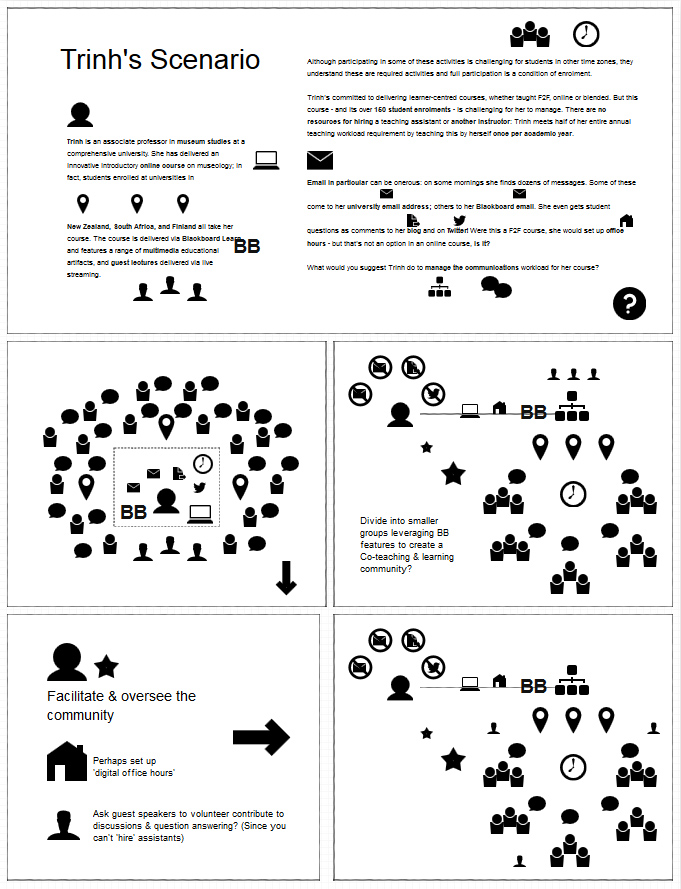 This week’s instructional design scenario kicked me into icon-ideation mode. In the spirit of nerdity I thought I’d share my approach:
This week’s instructional design scenario kicked me into icon-ideation mode. In the spirit of nerdity I thought I’d share my approach:
This was a complex problem with multiple factors. I’ve been taught that whenever there’s a large or messy situation you can best look at the whole picture if you extract the different pieces, re-arrange and play with them (yep, I said play). In this mode you can often come up with an idea you wouldn’t have otherwise. In IxD/INDD this is typically done with paper cutouts, icons or sticky notes to represent aspects, stakeholders or factors. People generally think this process is odd or silly but it does have a really important gain:
When you’re done forming a new representation of your potential solution you can then try to visually see if there are any holes, critical pieces left over, or items not well addressed before you invest time in development. This can lead to several “aha” moments where you test the validity of multiple ideas very rapidly (rapid viz). I’ve been taught that this is best done as a group to gain differing perspectives. I realized this week, that this class is innovative for me because it allows this sort of a text-based ‘design charrette‘ to occur on the forums. In total I had about 8 different ideas (icon formations) to suggest potential change, but my document was huge so I tapered it down. I represented the situation visually, then offered the community solution that was best supported by our readings. The neat part about this approach (and the approach we use on the forums) is it can actually reveal several valid strategies and I always look forward to reading those provided by my peers.
In terms of the problem scenario, volume of communications was one of the main issues communicated in this case; having 4 or more means of teacher-student communication amongst 150 students is not sustainable. I suggested that Trinh set down some firm rules regarding teacher-student communication and restrict email/personal communications to one main avenue, perhaps within/through Blackboard itself. I also made a few other suggestions with regards to the formation of a learning community:
Anderson states that “emerging best practices now recognize the flow of communication in online courses to be much less ‘teachercentric,’ […] teachers do not have to respond immediately to every student question and comment, and playing a less dominant role in class discourse can actually support the emergence of greater learner commitment and participation” (2008). Trinh can easily add an auto-responder to her own email instructing students to post questions in the forums, she can also add something to this effect on her blog and twitter. This means that she is freed up to perhaps employ a model of student-student help and interaction through the use of help forums and peer forums.
This supports the learner-centered model that Trinh is ‘committed’ to where “appropriate combinations of asynchronous and synchronous voice, text, and video” (2008), can support a learner-centered environment. Perhaps now is the time to develop on the asynchronous activities. She could use ‘technology as lever’ in this case to divide the large community of 150 students into smaller groups, employing a peer model of reciprocal co-teaching. Blackboard provides several tools to facilitate this.
For my oddball exploration I used quirktools.com>wires 😉

